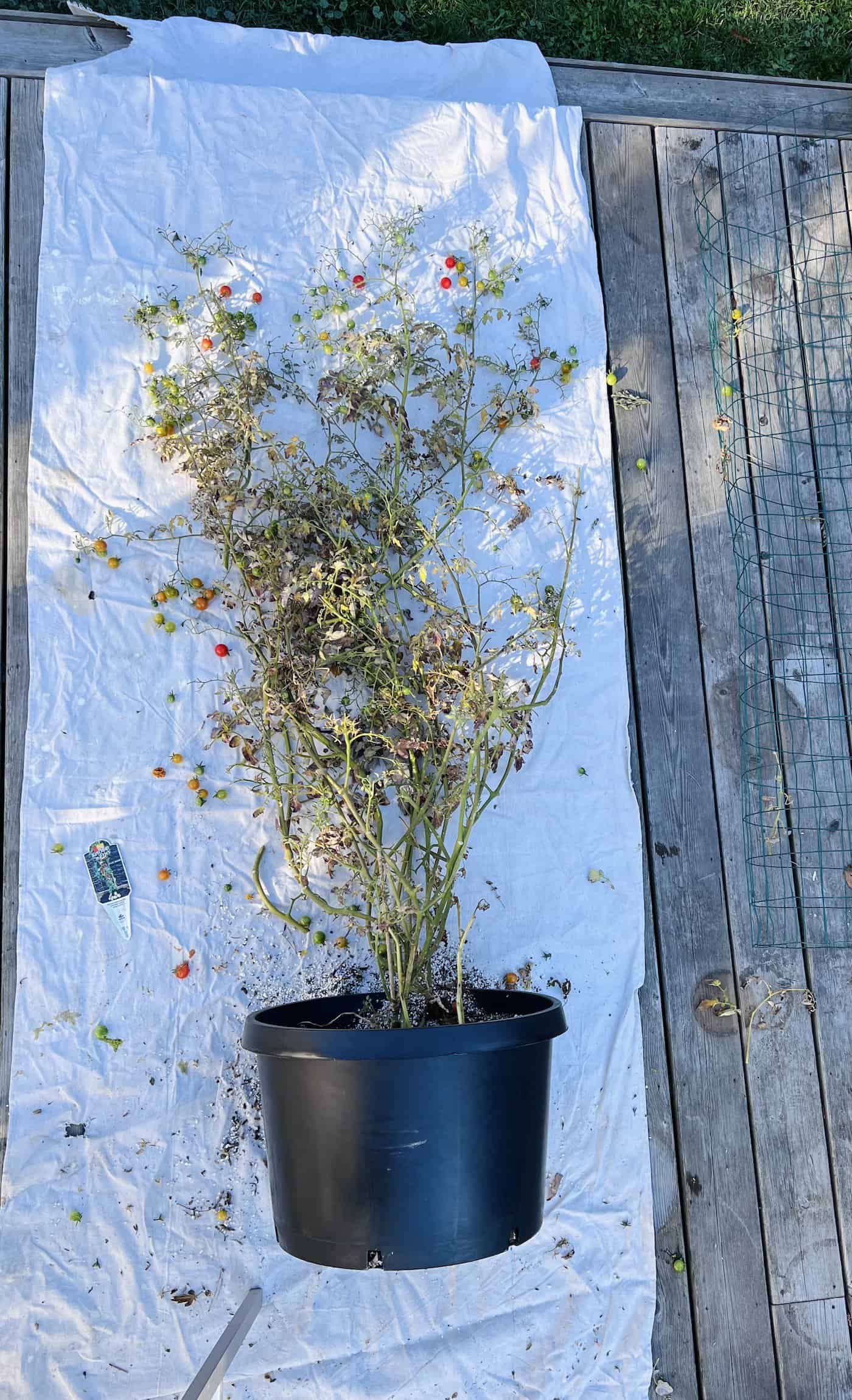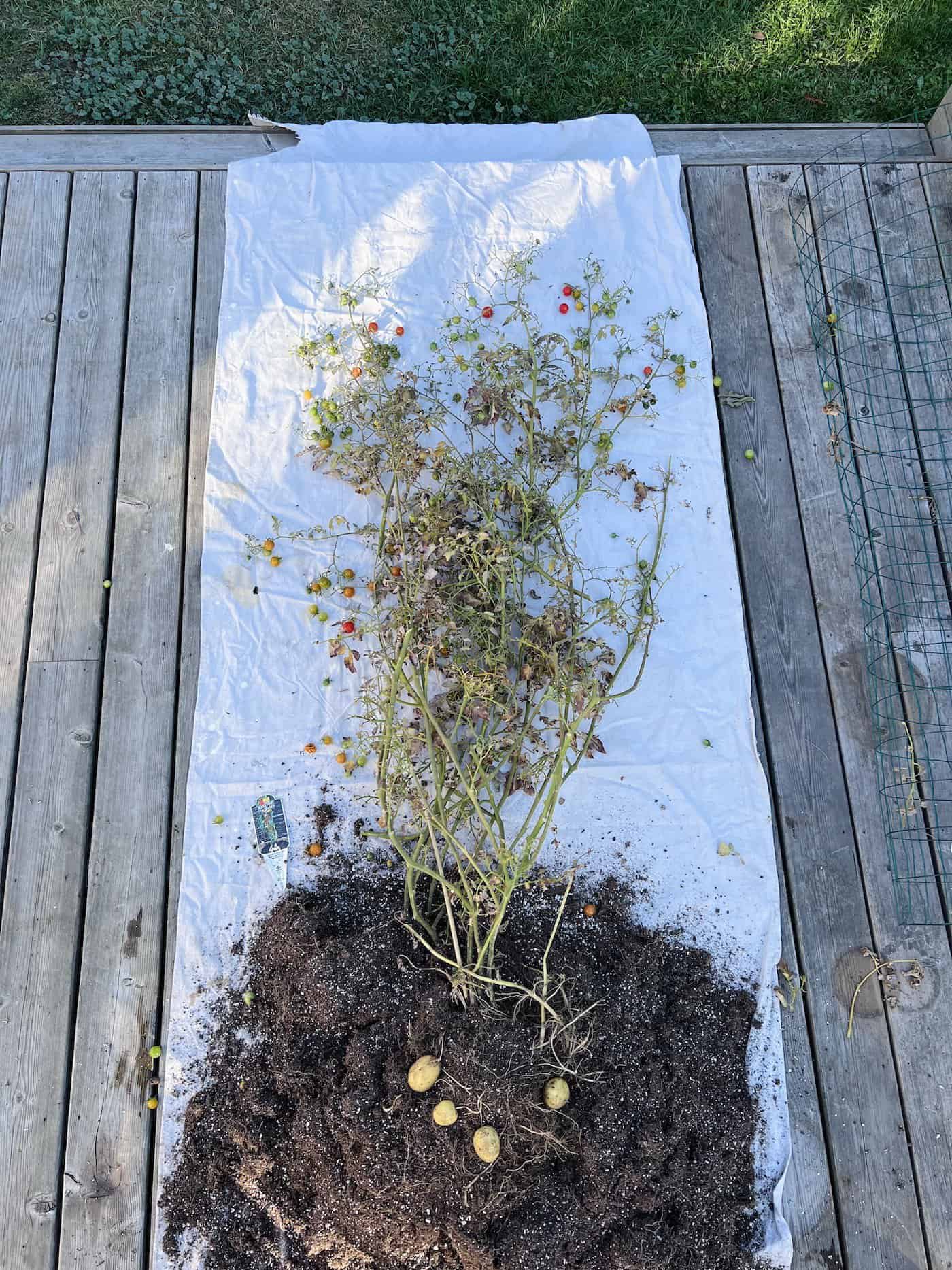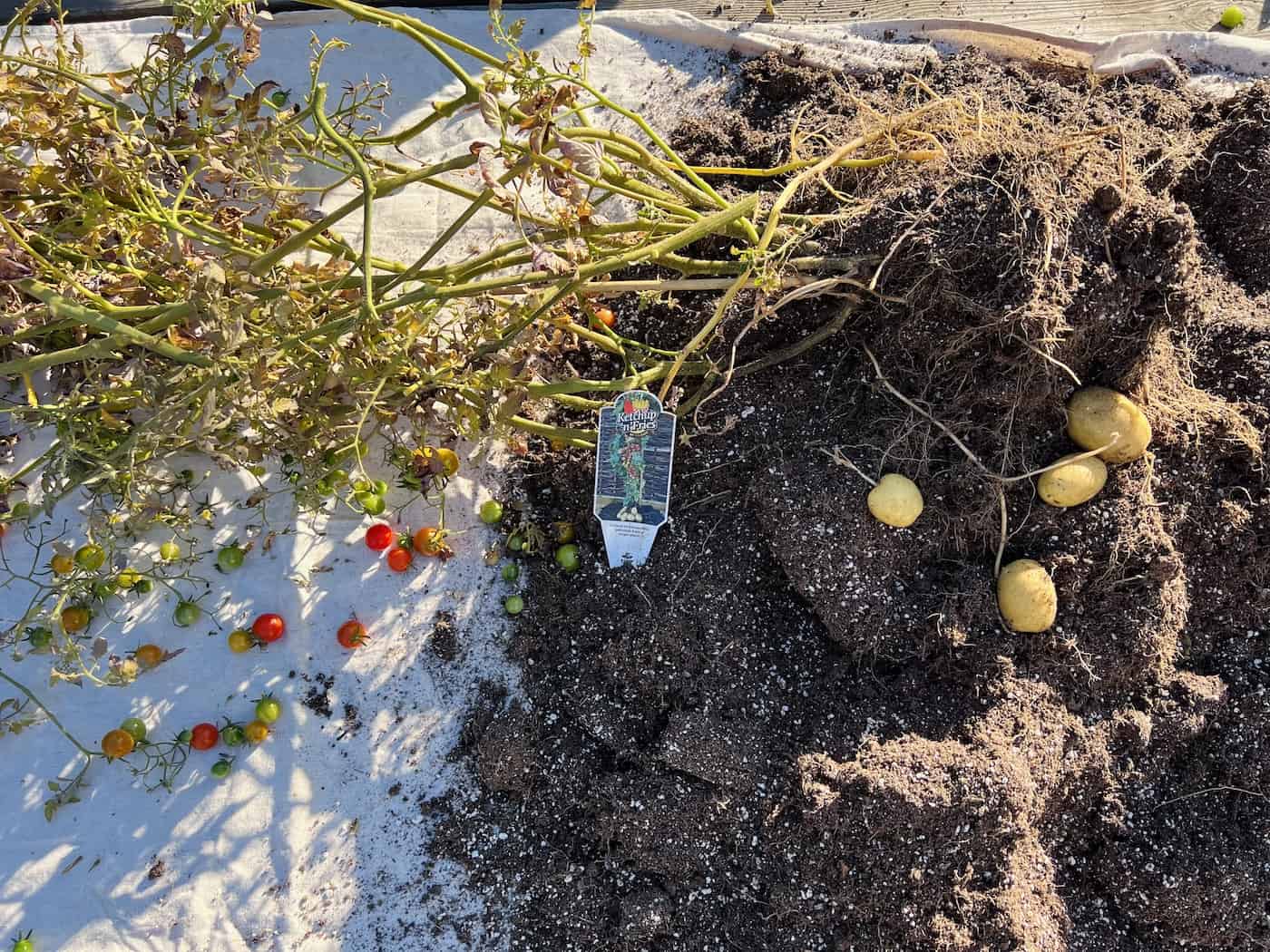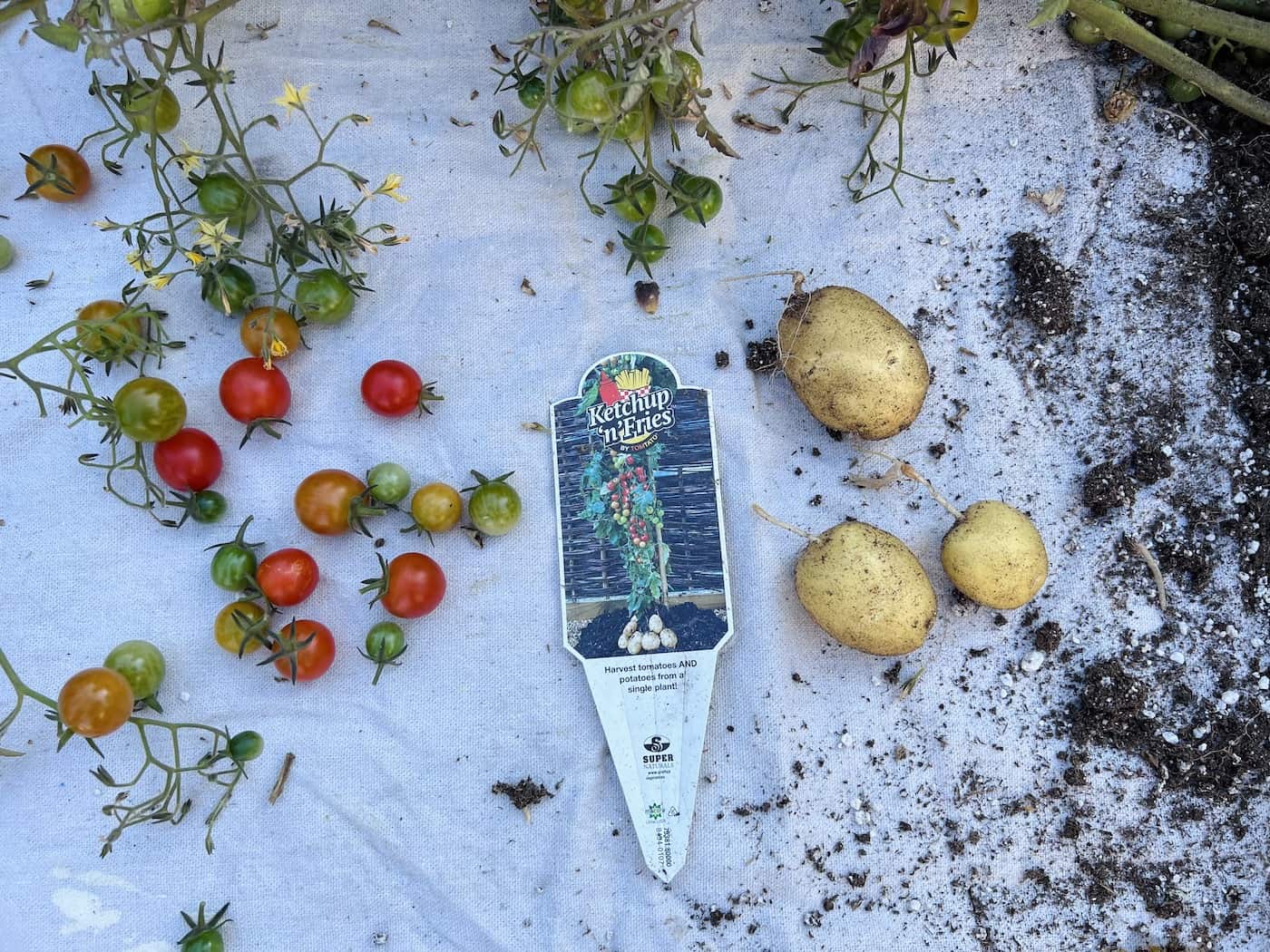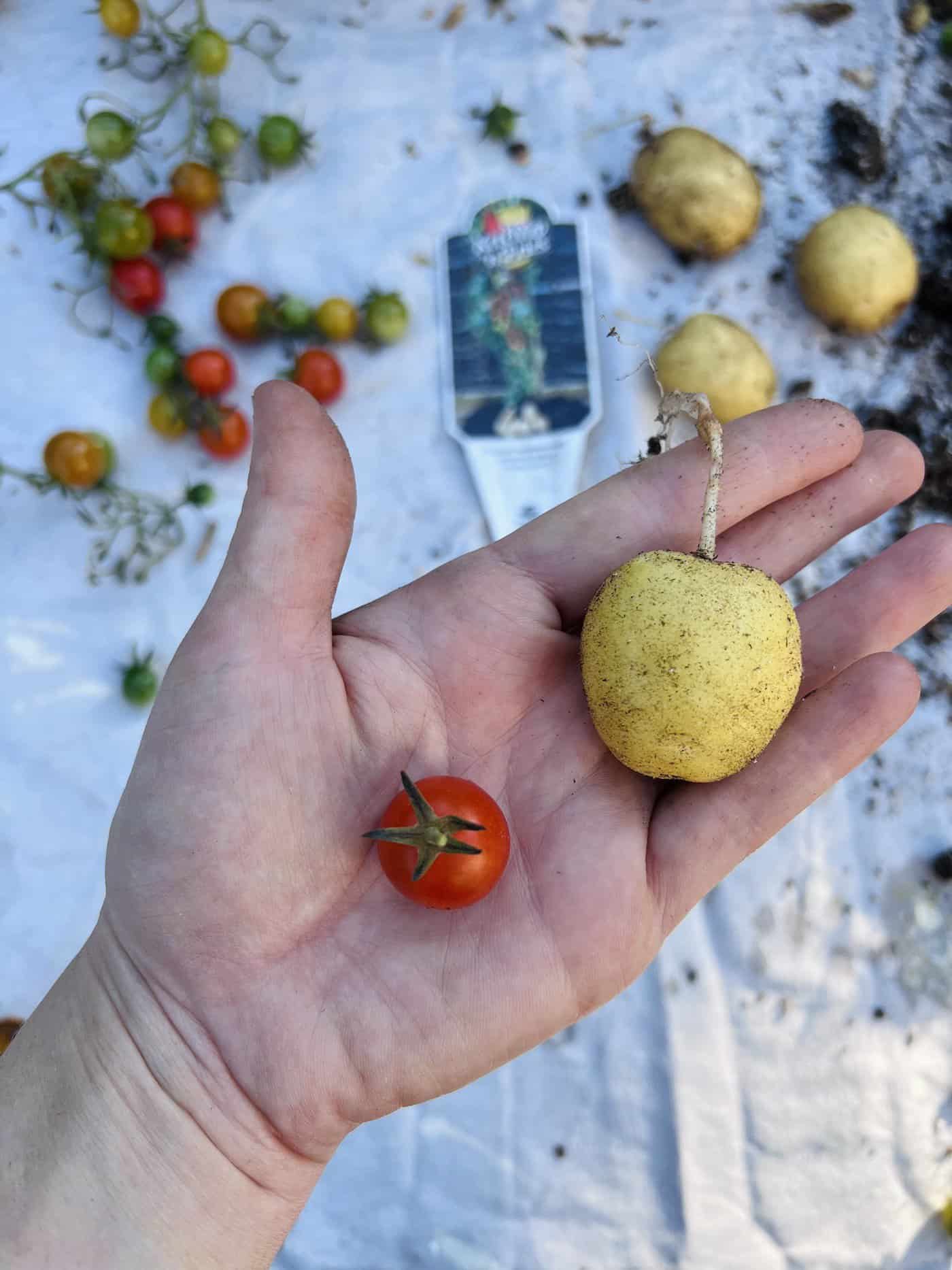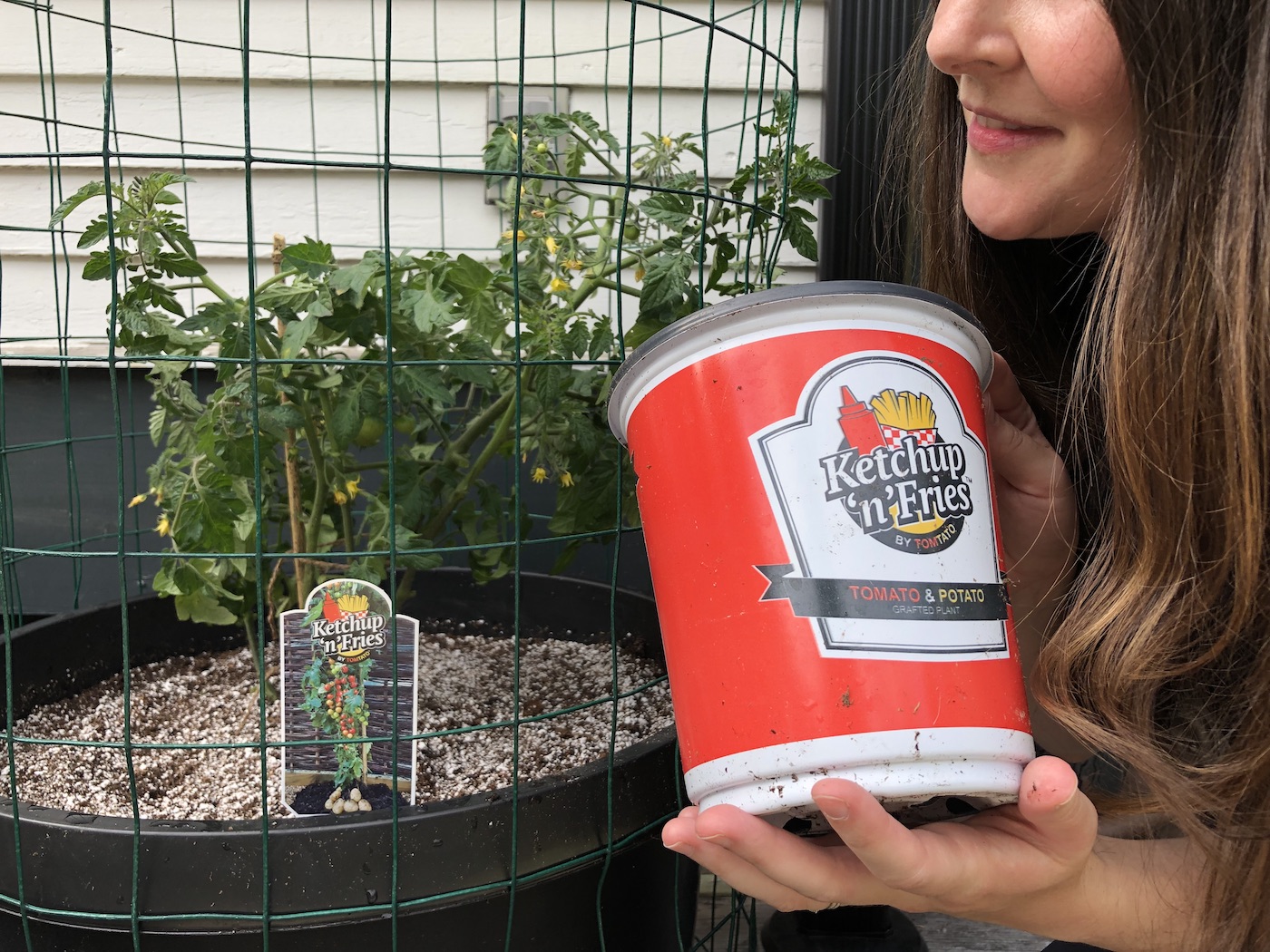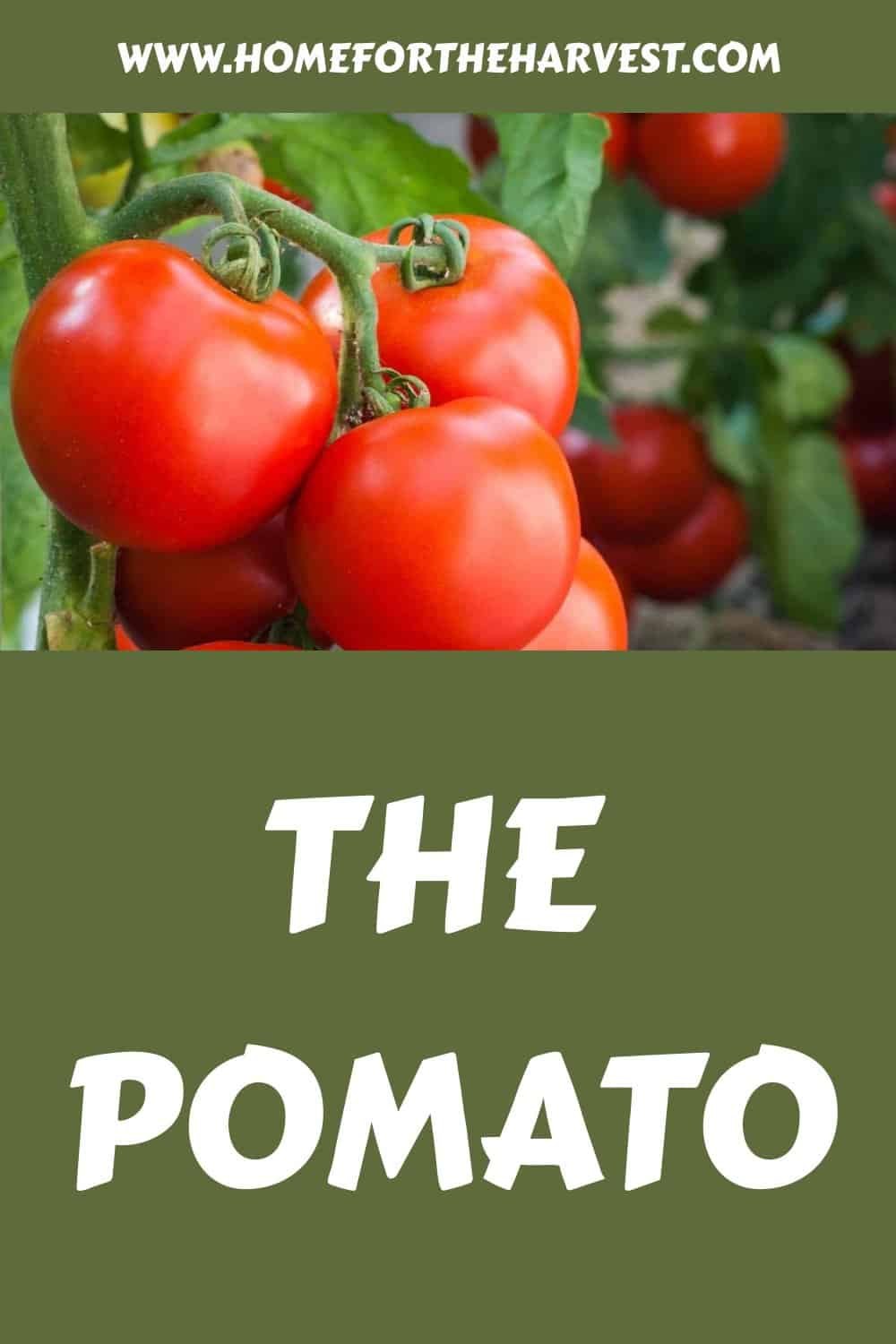The pomato plant is a specialty garden vegetable created by grafting the roots of a potato plant onto the stem of a tomato plant. Because the tomato and potato are in the same plant family, the tissue of the two plants is able to join and create a single plant.
Also called a “Tomtato,” the pomato plant has very similar growing requirements to most nightshades. While gardeners previously had to create their own pomato plants at home, these plants are now available at most specialty garden centers. The most famous brand of pomato is aptly named “Ketchup ‘N’ Fries™.”
Pomato plant basics
Pomato plants are quickly moving from rarely-encountered specialties to highly-requested garden staples. Pomatoes are especially sought-after by small-space gardeners who can save space by combining a tomato and potato plant in a single container.
Each pomato plant is made in a plant nursery by attaching the aboveground stem of a tomato plant to the belowground root system of a potato plant. The tomato’s roots are discarded, along with the potato plant’s foliage. The plant tissues fuse together to create a single functioning plant.
Buying pomato plants
Pomato plants are available at most specialty nurseries and some big box garden centers. They are specialty novelty plants, so they tend to sell out early. The most common variety is termed “Ketchup n’Fries” from Super Naturals Grafted Vegetables (which also sells grafted tomatoes). Sometimes pomato plants are labeled as “Tomtato” plants.
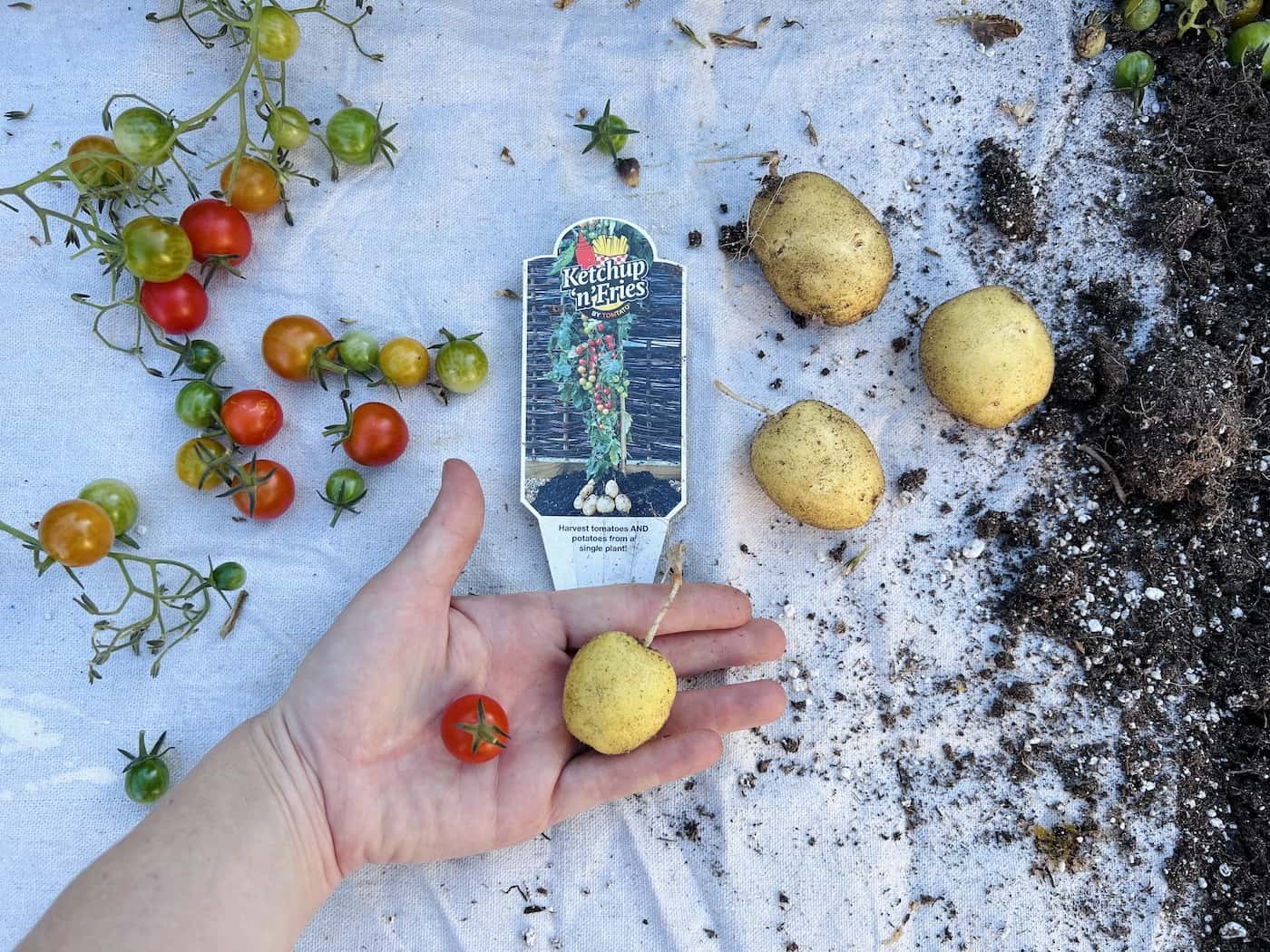
How to grow pomato plants
Pomato plants are relatively easy to grow. Like both their parent plants, tomato and potato plants, they grow well in raised beds and in containers on the patio. Start with a healthy plant and make sure it gets ample water and sunlight, and chances are good you’ll have a nice harvest of some tomatoes and potatoes!
Look for a planting location in full sun that gets a minimum of 6-8 hours of direct sunlight per day. Also, make sure you’re close to a water source to make watering the plant easy.
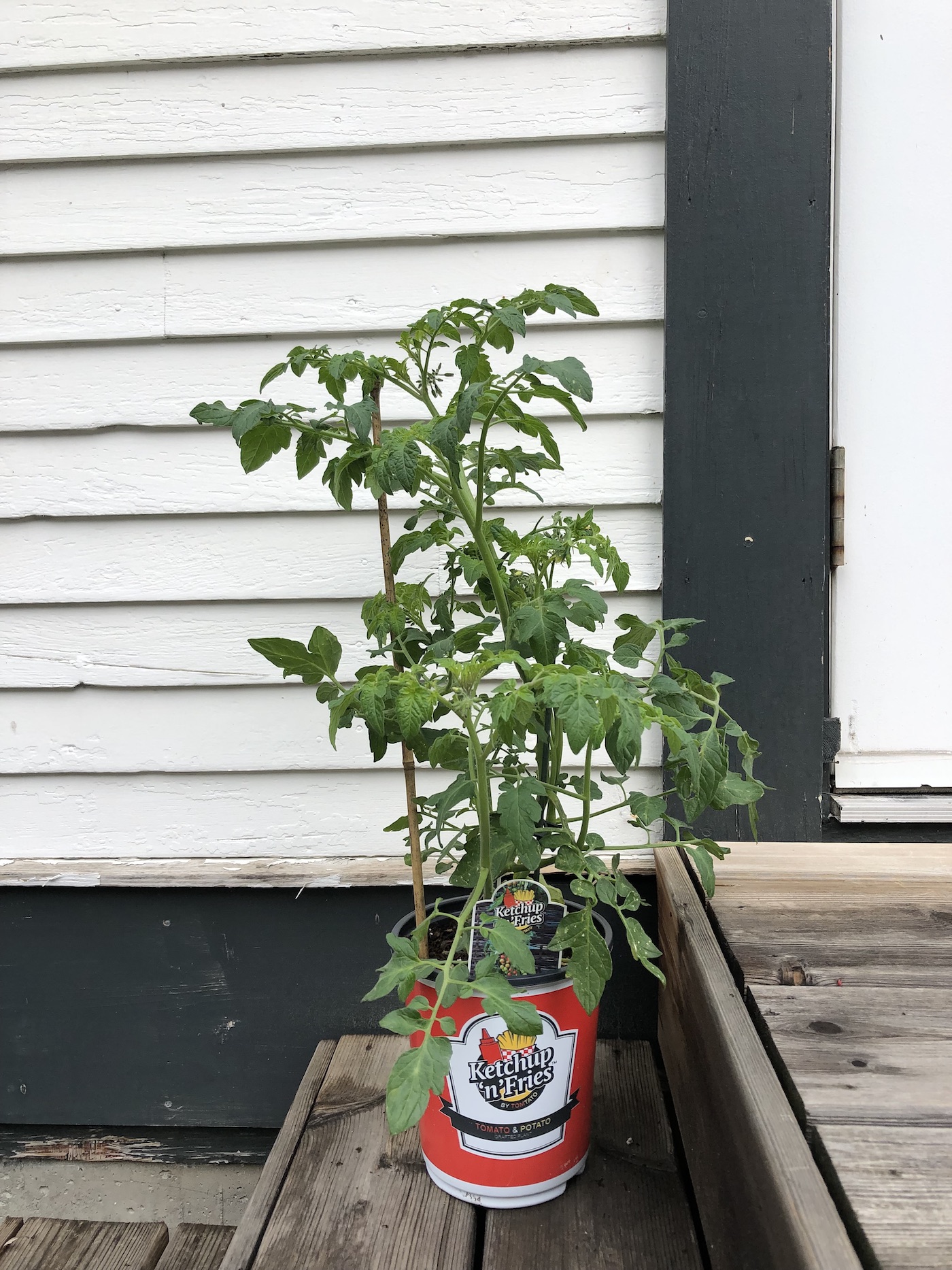
Planters for pomatoes
Start by planting your new Pomato plant in a larger container. They can be grown in raised beds, but growing them in a large container is more fun. My favorite containers for growing pomato plants are large felt grow bags and wooden whiskey barrels. If using grow bags for your plants, use a 10-gallon size or larger. These plants need lots of room!
Soil for pomato plants
Pomato plants grow best in loose, lightweight soil. Potatoes need quite a bit of space for the tubers to grow belowground, so avoid using dense, heavy soils and composts. Heavy soil can also make grow bags very heavy to move and make them more likely to rip if overloaded.
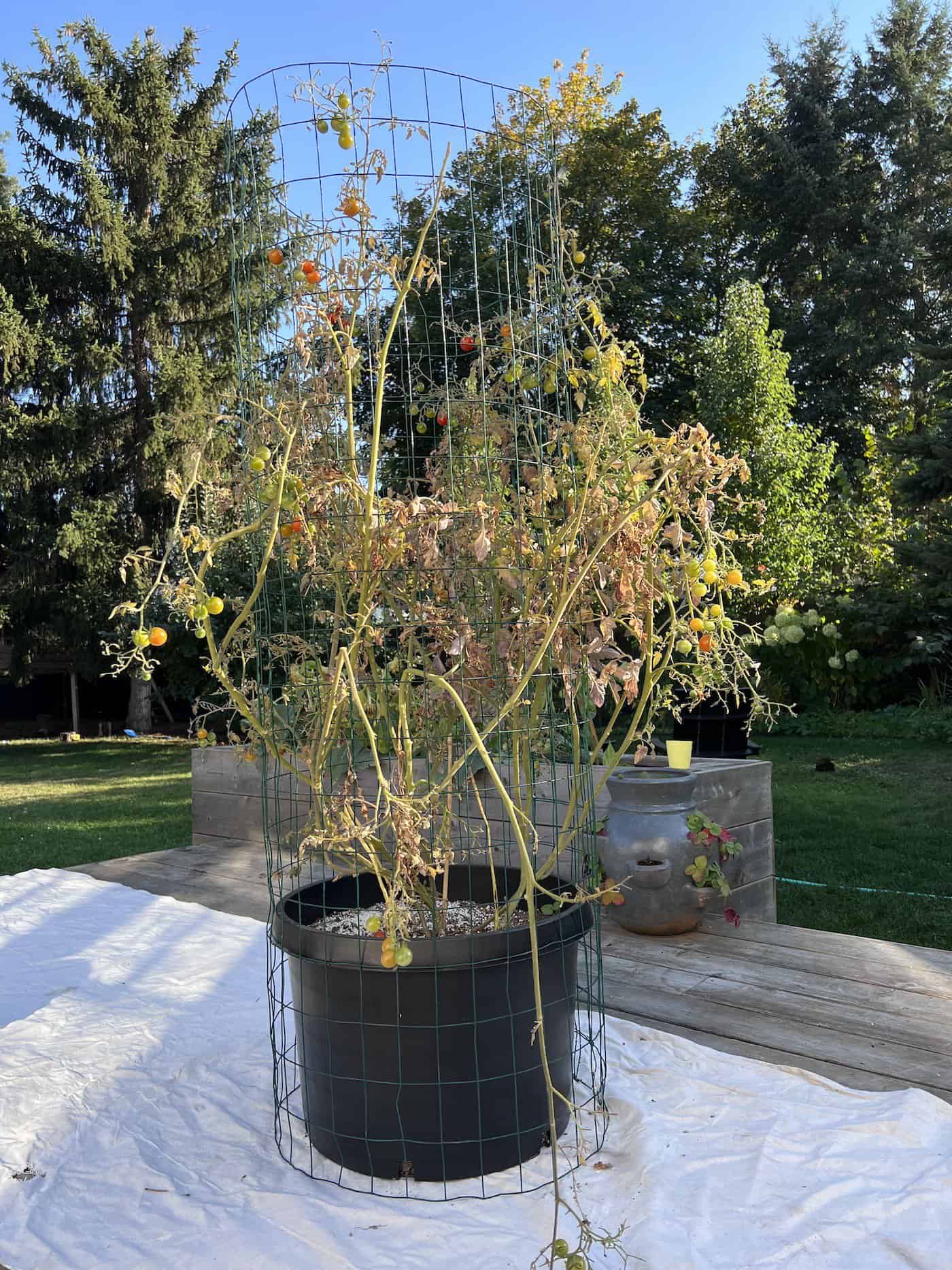
Tomato cages for pomatoes
Pomato plants are generally created with compact, determinate tomato plants. While these are not long-vining plants, they benefit from a tomato cage or tomato stake to contain the plant and for the stems to rest on as they become laden with fruit. The tomato cage should be sized to the planter or grow bag so that the plant container isn’t overly top-heavy.
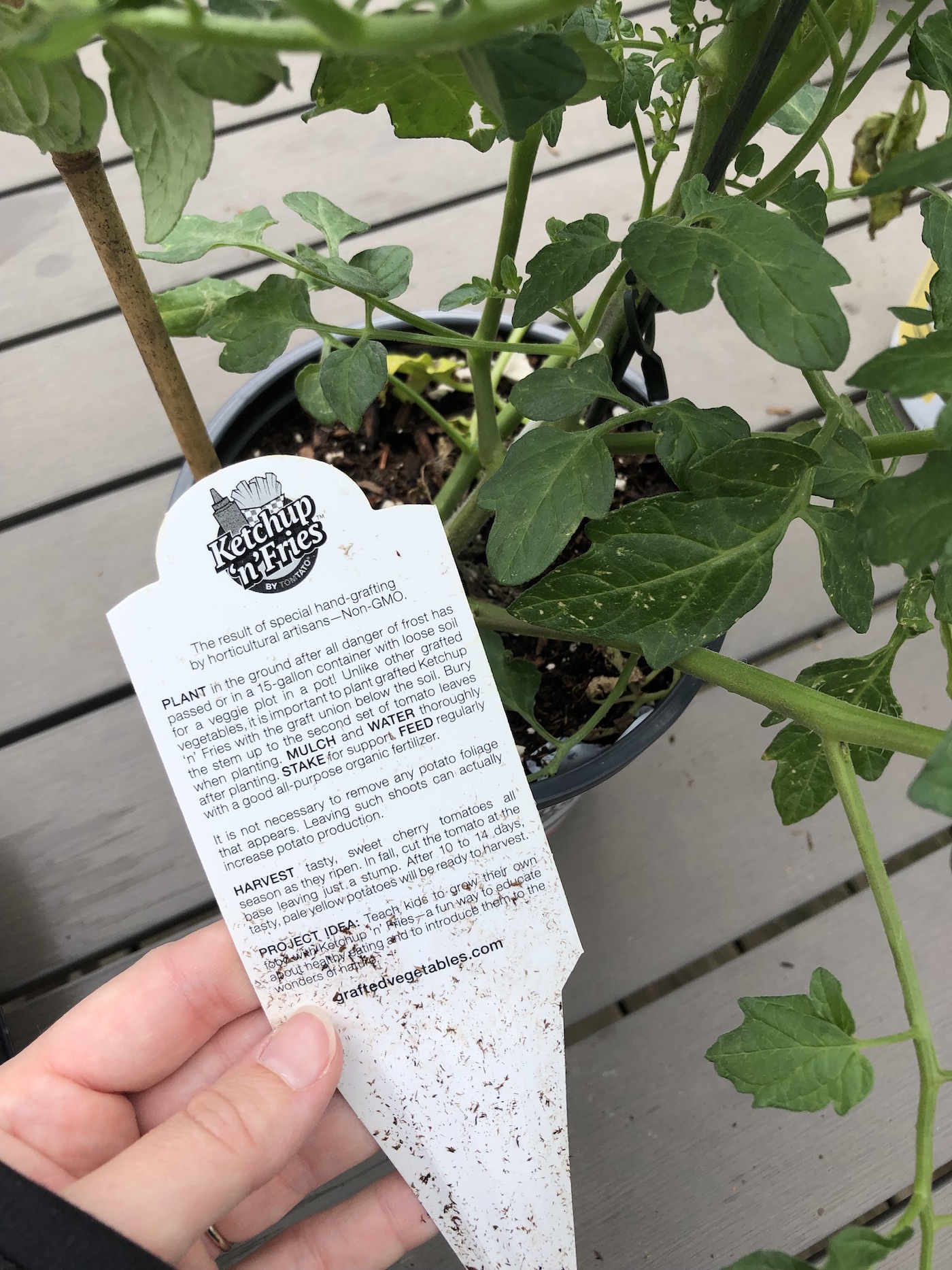
Fertilizer for pomatoes
Pomatoes are heavy feeders. Use a high-quality, slow-release organic fertilizer formulated for tomatoes and other similar garden vegetables. Most veggie garden fertilizers should work well (just be sure to follow the instructions on the package).
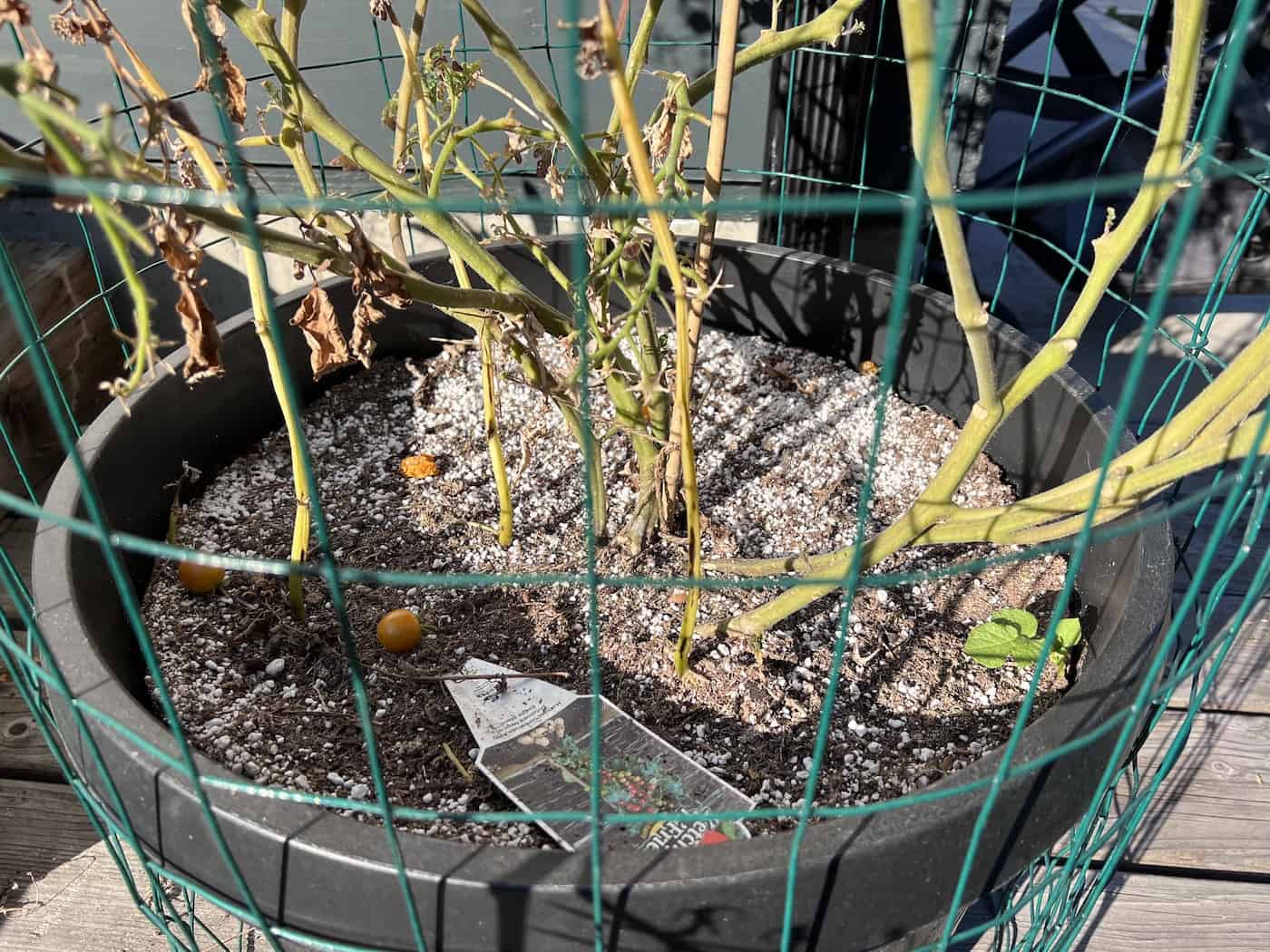
Companion plants for tomatoes
Pomato plants (and other garden vegetables like tomatoes and potatoes) grow best when interplanted with beneficial plants to boost soil nutrients and ward off pests. Some of the best companion plants for tomatoes include basil, thyme, asparagus, peppers, marigolds, and sunflowers.
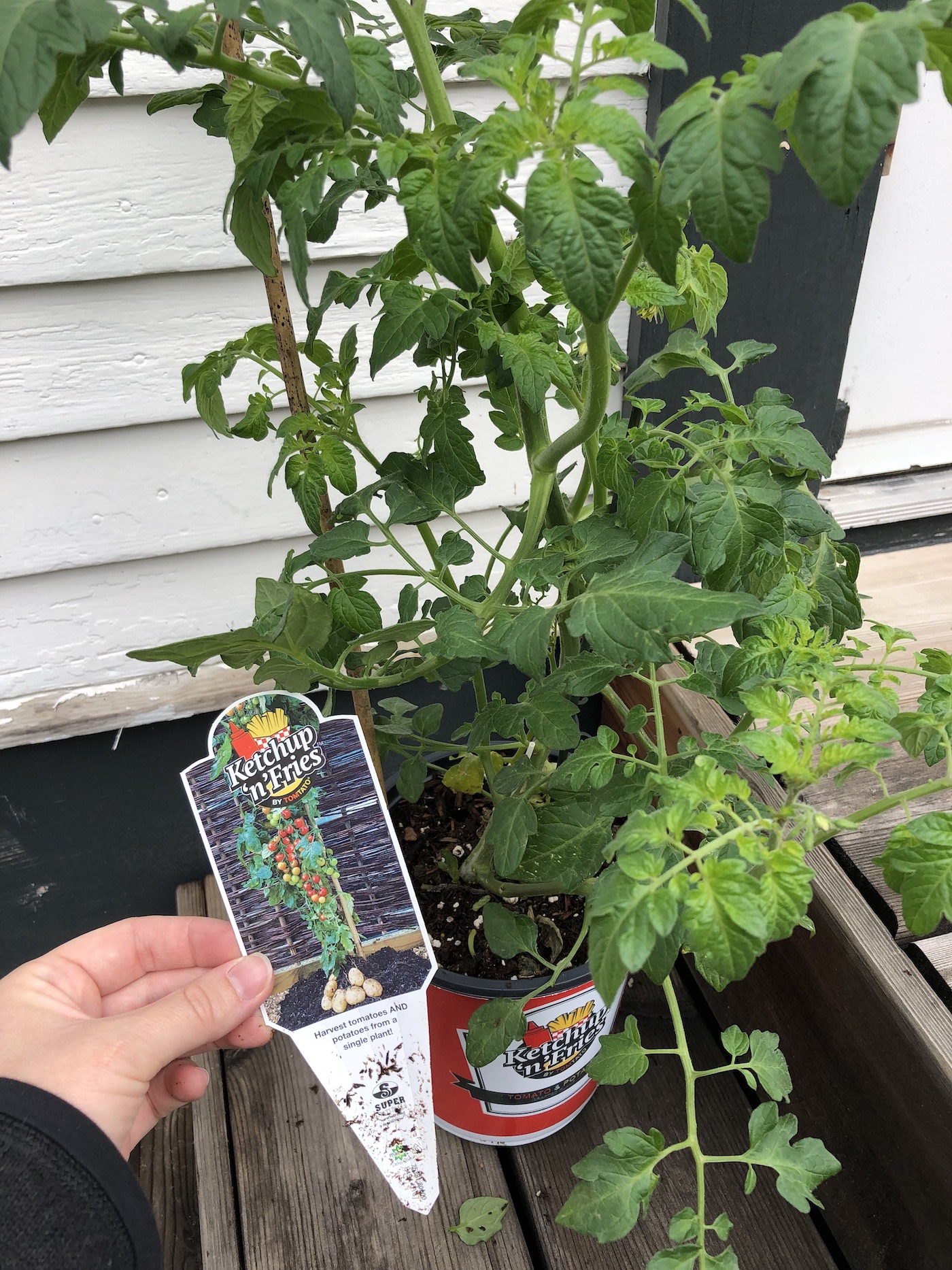
Creating pomato plants
Pomato plants are created by grafting the bottom half of a potato plant with the top half of a tomato plant. You cannot currently grow pomato plants from seeds. Each plant must be made manually using the rootstock of a small potato plant and the stem/leaves of a tomato seedling.
Creating a pomato plant requires both a young seedling tomato plant and a sprouted baby potato plant. Pomatoes require the belowground portions of the potato plant and the aboveground portions of the tomato plant. While you can use any tomato variety and potato variety, the most commonly used choices are small-fruited cherry tomatoes and early potato varieties that produce high-quality new potatoes.
Each plant is trimmed in half by cutting the lower part of the main stem – above the soil line but below the bottom leaves. A fresh, clean cut is made on each stem and they are physically joined together with grafting tape so that the tissue can heal together to create a single plant unit. Gardeners who create their own Pomato plants generally graft up several plants in case some of the grafts do not work (don’t “take”).
